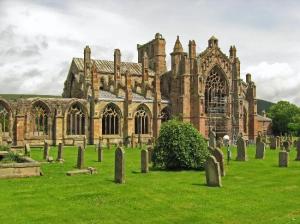Born in Edinburgh, Scotland on August 15, 1771, Walter Scott became the ninth child of his father Walter Scott and mother Anne Rutherford. Unfortunately, most of Scott’s childhood was spent traveling to and from different relatives in order to see different doctors and attend other hospitals. At eighteen months old, Scott contracted Polio or Poliomyelitis, a disease that can affect nerves and cause paralysis.
As the first fully authenticated case of child paralysis in medical history, Scott’s family took precautions by sending him to stay with other family members in order for him to receive proper medical attention. They hunted for help finding a cure to Scott’s lameness in his right leg. Although his health experienced little progression, speaking with family members such as his grandfather and aunt aided Scott in creating his future historical novels. His situation also gave him time to develop his love for literature and poetry.
Something I found interesting was the relation of Walter Scott to Alison Bechdel, the author of Fun Home: A Family Tragicomic. Scott used his poor health experience to his benefit by listening to his family’s stories to develop ideas for his future works. Bechdel used her tragic family history to discover lessons and make connections about her father’s death throughout her adolescence. In a way, both of the authors used their family histories to their own aid, creating something beautiful out of their less than ideal situations.
It’s safe to say that without Scott, American culture and literature would not operate the way they do today. As mentioned in our Walter Scott and America post, Mark Twain made an exasperated comment on the themes of class differentiation and chivalry in Scott’s novels. The southern part of the United States gained influence from these ideas, and people began to live their lives the way Scott’s characters lived in the novels. Twain claims Scott should take some fault in the cause of the American Civil War.
Scott’s writing also took a tole on American literature in several ways. Many professors, such as Anne Stapleton, use his novels as a part of their class work today. Other scholars study the ideas portrayed through his works such as race and class discrimination.
Scott’s major publications include Minstrelsy of the Scottish Border, The Lay of the Last Minstrel, The Lady in the Lake, The Lord of the Isles, and Waverley. The Lay of the Last Minstrel, a long narrative poem about old manners and customs of the England and Scotland border, made him the most popular author of his time. Scott created six editions within three years, and sales reached 27,000 copies. In our interview with Professor Florence Boos, she mentions how Scott gave Scotland a presence in America, England, and Scotland itself. The way he spoke of the historical sites of Scotland such as the Melrose Abbey brought many tourists to the country. The poem reads, “If thou wouldst view fair Melrose aright, Go visit it by the pale moon-light.”

Scott became one of the most prominent writers in Scotland and one of the most influential romance-style writers of the 19th century who created the genre of historical fiction.
Maddie Clough